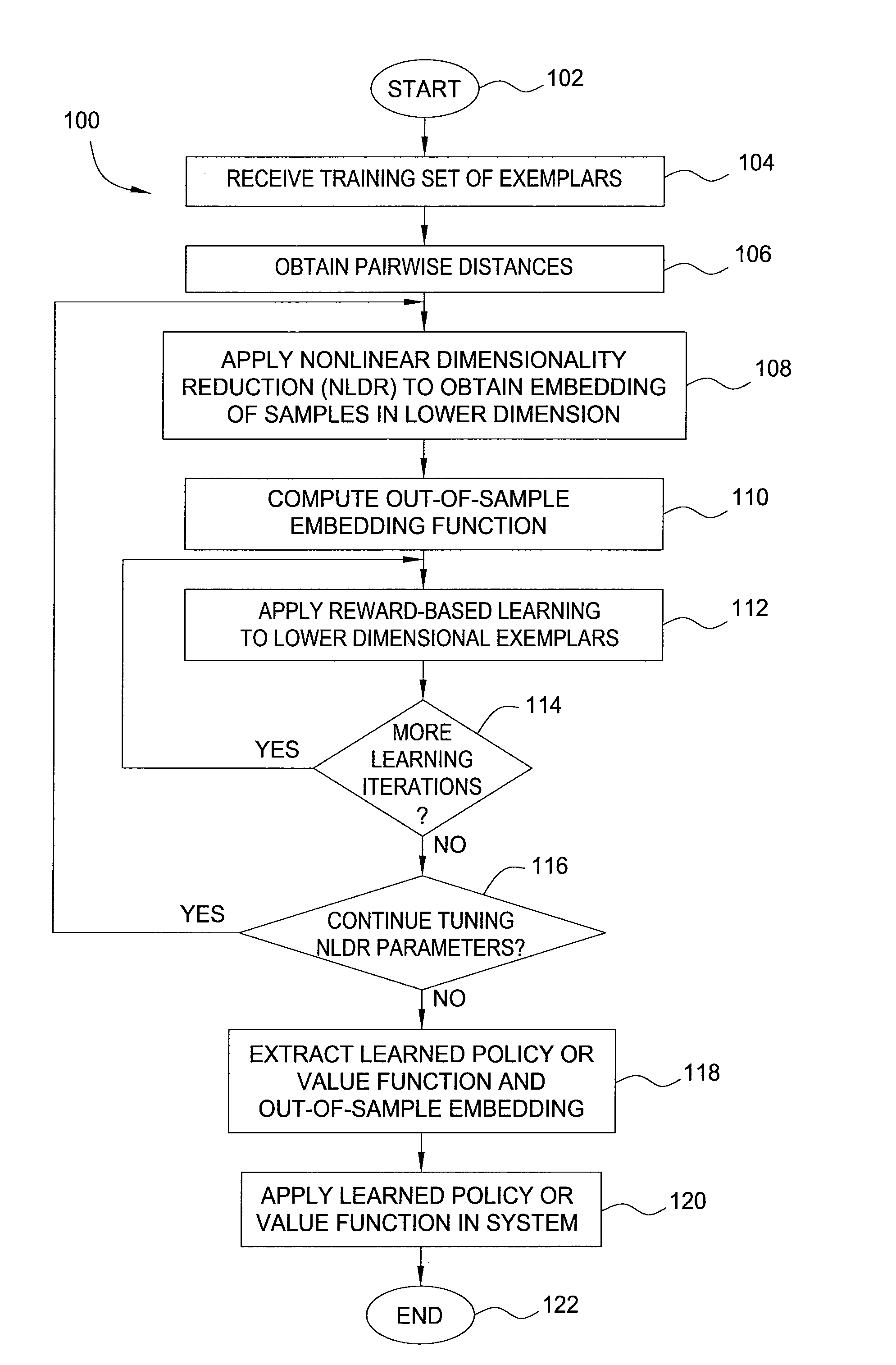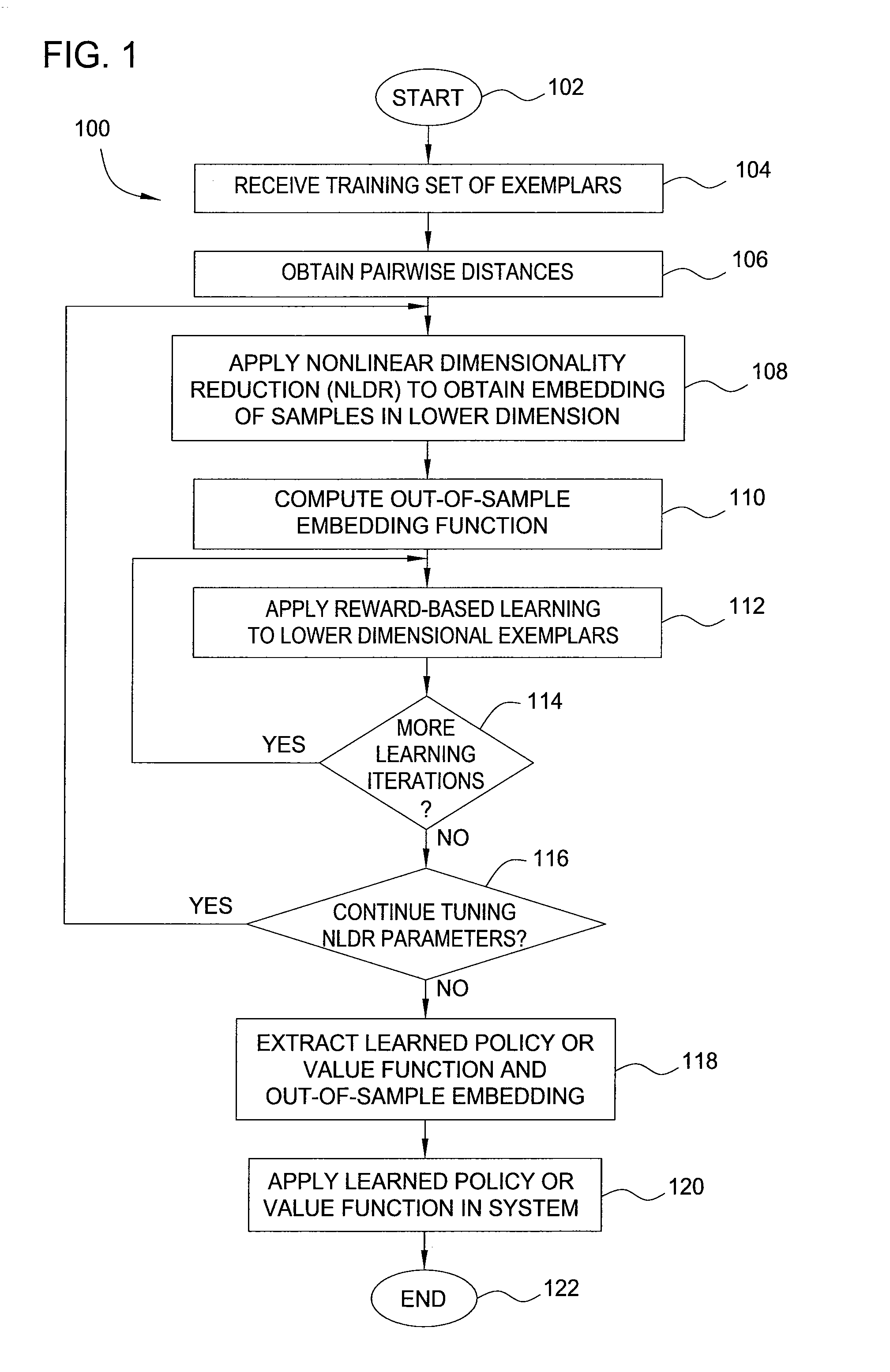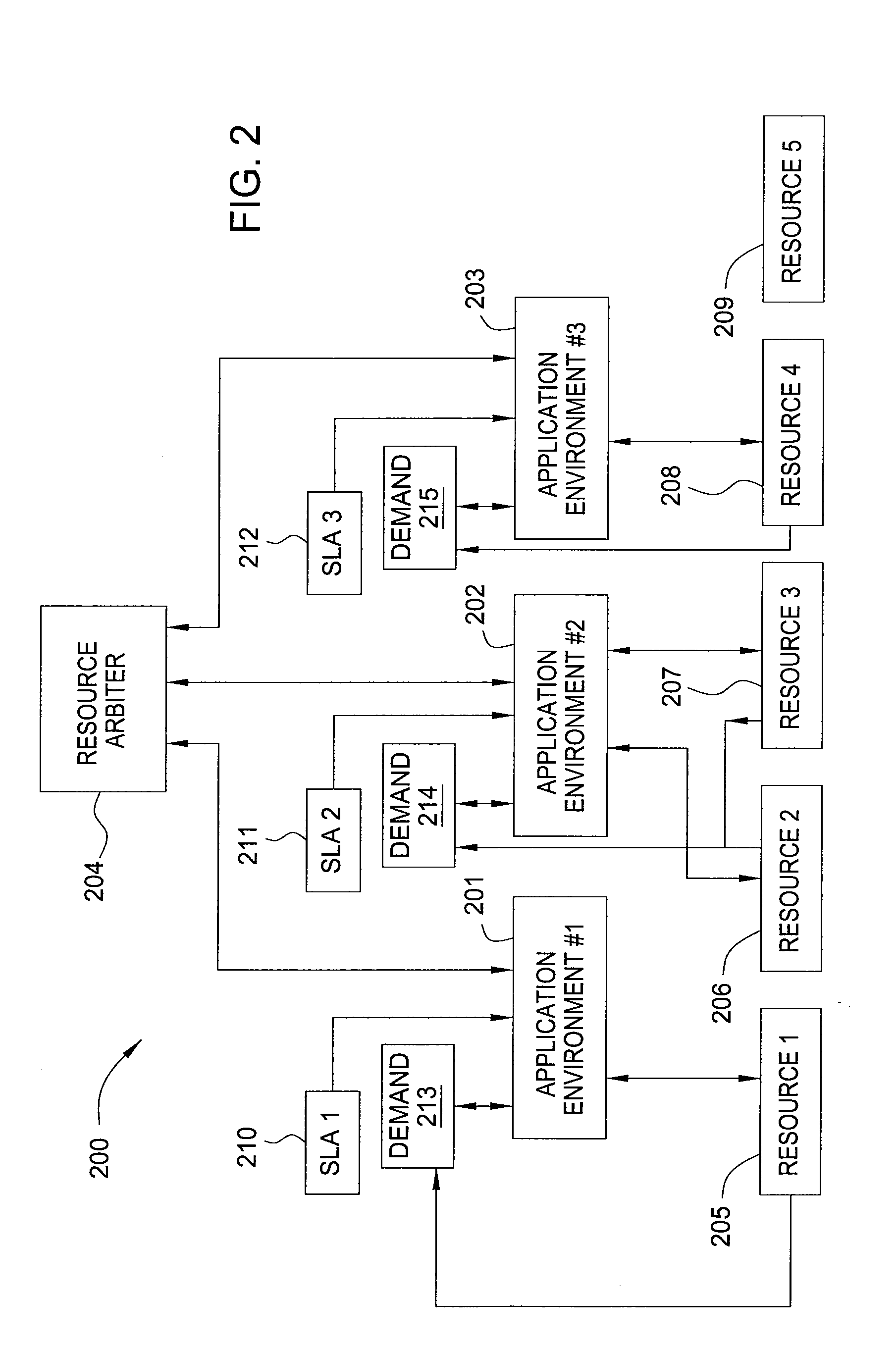Method and apparatus for improved reward-based learning using nonlinear dimensionality reduction
a nonlinear dimensionality reduction and learning method technology, applied in the field of management or control of systems or plants, can solve the problems of difficult learning, time-consuming, knowledge-intensive, etc., and achieve the effect of reducing learning difficulty, reducing learning difficulty, and reducing learning difficulty
- Summary
- Abstract
- Description
- Claims
- Application Information
AI Technical Summary
Benefits of technology
Problems solved by technology
Method used
Image
Examples
Embodiment Construction
[0012]In one embodiment, the present invention is a method and apparatus for reward-based learning of management or control policies, utilizing innovative methods for dimensionality reduction of data.
[0013]In some embodiments, techniques for non-linear dimensionality reduction using a given distance metric Do are applied to obtain a reduction mapping E( ), which maps (state, action) pairs into a lower-dimension representation. One can then apply any one or more of a number of known reward-based learning methods to a lower-dimension data set obtained using the reduction mapping E( ) in order to obtain a management policy.
[0014]Embodiments of the present invention employ reward-based learning methodologies, including well-known Reinforcement Learning (RL) techniques, in order to generate effective policies (i.e., deterministic or non-deterministic behavioral rules or mappings of system states to management actions) for management of a system. Within the context of the present inventio...
PUM
 Login to View More
Login to View More Abstract
Description
Claims
Application Information
 Login to View More
Login to View More - R&D
- Intellectual Property
- Life Sciences
- Materials
- Tech Scout
- Unparalleled Data Quality
- Higher Quality Content
- 60% Fewer Hallucinations
Browse by: Latest US Patents, China's latest patents, Technical Efficacy Thesaurus, Application Domain, Technology Topic, Popular Technical Reports.
© 2025 PatSnap. All rights reserved.Legal|Privacy policy|Modern Slavery Act Transparency Statement|Sitemap|About US| Contact US: help@patsnap.com



